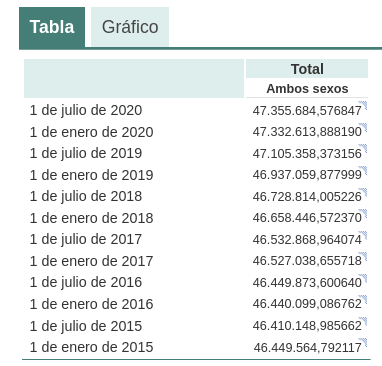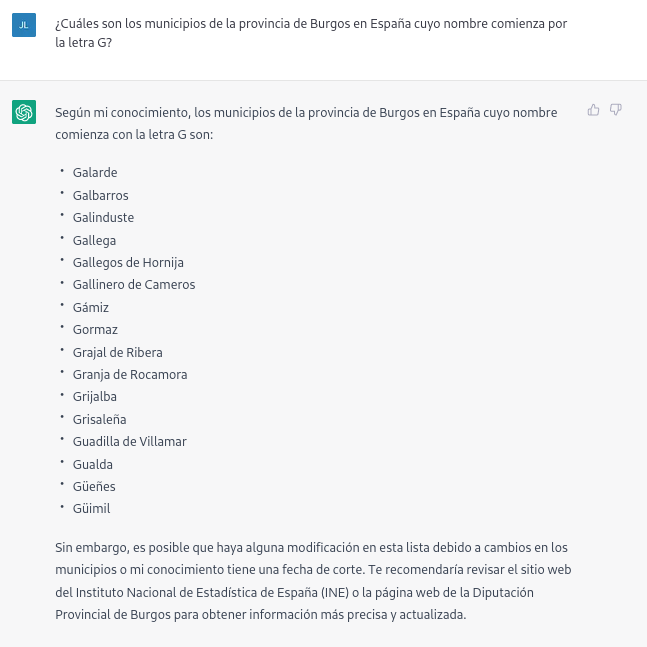
Generative artificial intelligence refers to machine’s ability to generate original and creative content, such as images, text or music, from a set of input data. As far as text generation is concerned, these models have been accessible, in an experimental format, for some time, but began to generate interest in mid-2020 when Open AI, an organisation dedicated to research in the field of artificial intelligence, published access to its GPT-3 language model via an API.
The GPT-3's architecture is composed of 175 billion parameters, comparing to its predecessor GPT-2 was 1.5 billion parameters, i.e. more than 100 times more. Therefore, GPT-3 represents a huge change in scale as it was also trained with a much larger corpus of data and a much larger token size, which allowed it to acquire a deeper and more complex understanding of the human language.
Although it was in 2022 when OpenAI announced the launch of chatGPT, which provides a conversational interface to a language model based on an improved version of GPT-3, it has only been in the last two months that the chat has attracted massive public attention, thanks to extensive media coverage that tries to respond to the emerging general interest.
In fact, ChatGPT is not only able to generate text from a set of characters (prompt) like GPT-3, but also it is able to respond to natural language questions in several languages including English, Spanish, French, German, Italian or Portuguese. This specific updated issue in the access interface from an API to a chatbot that has made the AI accessible to any type of user.
Maybe for this reason, more than a million people registered to use it in just five days, which has led to the multiplication of examples in which chatGPT produces software code, university-level essays, poems and even jokes. Not to mention the fact that it has been able to ace an history SAT or pass the final MBA exam at the prestigious Wharton School.
All of this has put generative AI at the centre of a new wave of technological innovation that promises to revolutionise the way we relate to the internet and the web through AI-powered searches or browsers capable of summarising the results of these searches.
Just a few days ago, we heard the news that Microsoft is working on the implementation of a conversational system within its own search engine, which has been developed based on the well-known Open AI language model and whose news has put Google in check.
As a result of this new reality in which AI is here to stay, the technological giants have gone a step further in the battle to make the most of the benefits it brings. Along these lines, Microsoft has presented a new strategy aimed at optimising the way in which we interact with the internet, introducing AI to improve the results offered by browser search engines, applications, social networks and, in short, the entire web ecosystem.
However, although the path in the development of new and future services offered by Open AI's remains to be seen, advances such as the mentioned above, offer a small hint of the browser war that is coming and that will probably change the way we create and find content on the web in the short term.
The open data
GPT-3, like other models that have been generated with the techniques described in the original GTP-3 scientific publication, is a pre-trained language model, which means that it has been trained with a large dataset, in total about 45 terabytes of text data. According to the paper, the training dataset was composed of 60% of data obtained directly from the internet containing millions of documents of all kinds, 22% from the WebText2 corpus built from Reddit, and the rest from a combination of books (16%) and Wikipedia (3%).
However, it is not known exactly how much open datasets GPT-3 uses, as OpenAI does not provide more specific details about the dataset used to train the model. What we can ask chatGPT itself are some questions that can help us draw interesting conclusions about its use of open data.
For example, if we ask chatGPT what was the population of Spain between 2015 and 2020 (we cannot ask for more recent data), we get an answer like this:

As we can see in the image above, although the question is the same, the answer may vary in both the wording and the information it contains. The variations can be even greater if we ask the question on different days or in different threads:
Small variations in the wording of the text, generating the question at different times in the conversation thread (remember that it saves the context) or in different threads or on different days may lead to slightly different results. Moreover, the answer is not completely accurate, as the tool itself warns us if we compare it with the INE's own series on the resident population in Spain, where it recommends us to consult. The data that we would ideally have expected in the response could be obtained in an open INE dataset:

Such responses suggest that open data has not been used as an authoritative source for answering factual questions, or at least that the model is not yet fully refined on this matter. Doing some basic tests with questions about other countries we have observed similar errors, so this does not seem to be a problem only with questions referring to Spain.
If we ask more specific questions, such as asking for a list of the municipalities in the province of Burgos that begin with the letter "G", we get answers that are not completely correct, as is typical of a technology that is still in its infancy.

The correct answer should contain six municipalities: Galbarros, La Gallega, Grijalba, Grisaleña, Gumiel de Hizán and Gumiel del Mercado. However, the answer we have obtained only contains the first four and includes localities in the province of Guadalajara (Gualda), municipalities in the province of Valladolid (Gallegos de Hornija) or localities in the province of Burgos that are not municipalities (Galarde). In this case, we can also turn to the open dataset to get the correct answer.
Next, we ask ChatGPT for the list of municipalities beginning with the letter Z in the same province. ChatGPT tells us that there are none, reasoning the answer, when in fact there are four:

As can be seen from the examples above, we can see how open data can indeed contribute to technological evolution and thus improve the performance of Open AI's artificial intelligence. However, given its current state of maturity, it is still too early to see the optimal use of open data to answer more complex questions.
Therefore, for a generative AI model to be effective, it is necessary to have a large amount of high quality and diverse data, and open data is a valuable source of knowledge for this purpose.
In future versions of the model, we will probably be able to see how open data will acquire a much more important role in the composition of the training corpus, achieving a significant improvement in the quality of the factual answers.
Content prepared by Jose Luis Marín, Senior Consultant in Data, Strategy, Innovation & Digitalization.
The contents and views reflected in this publication are the sole responsibility of the author.
¿Existe algún dataset con las leyes Españolas en vigencia?
Hola Manuel,
El BOE publica aquí las nacionales aquí: Búsqueda de Legislación - Conjunto de datos | datos.gob.es o aquí Boletín Oficial del Estado (BOE) - Conjunto de datos | datos.gob.es
Para la legislación autonómica, cada CC.AA publica su boletín. Puedes buscar aquí los conjuntos de datos que tenemos end datos.gob.es: Conjuntos de datos | datos.gob.es
Esperamos haberte servido de ayuda